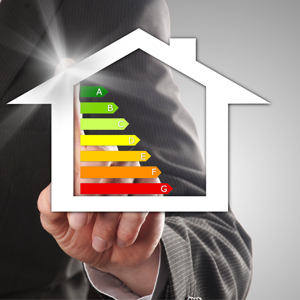

Building energy ratings allow owners and tenants to understand their building's energy use and provide the market with information that can assist in properly valuing building energy efficiency. In this way, energy rating represent the “walls” of building energy efficiency—the connection between the floor set by codes and the ceiling set by high-performance standards. NEEP helps to reinforce these walls, in conjunction with its other buildings initiatives, to advance the market towards zero net energy buildings.
Building energy rating and disclosure (BER&D) policies currently in place across the U.S. require property owners to evaluate their buildings using rating tools that evaluate either the actual energy performance of the building (operational rating) or the building's energy efficiency features independent of how the tenant uses them (asset rating). The policies also stipulate the timing and audience for disclosing these ratings results, requiring regular or time of sale reporting either publically or privately.
NEEP promotes BER&D policies that require owners to disclose the energy performance of their buildings to a variety of market actors as a tool to motivate voluntary energy efficiency upgrades. In 2009, NEEP released a report on Valuing Building Energy Efficiency through Disclosure and Upgrade Policies that provides a roadmap for implementing two key tools as part of a building energy rating system. In 2012, NEEP produced a supplement to this report, Building Energy Rating and Disclosure Policies: Update and Lessons from the Field (handout available here), which summarizes recent successful and failed attempts and implementing building energy rating policies across the U.S. and provides guidance to those who want to promote BER&D policies at the state or local level. In 2016, NEEP released the Public Sector Building Energy Benchmarking: Utility Data Access Options and Opportunities report which highlights exemplary municipal efforts at accessing and managing building energy consumption data and offers best practices for public-sector stakeholders to help implement portfolio-wide building energy management. NEEP also supports innovative Building Asset Rating programs that seek to make these ratings more useful and less expensive.
Building energy rating policies have been implemented in several cities and a few states throughout the country. NEEP maintains a brief, Building Energy Benchmarking and Disclosure Policies in the Northeast and Mid-Atlantic, that highlights where Benchmarking ordinances have been enacted in the region. The information gained from these policies can be used to develop more progressive building energy codes and above-code programs, which helps to pave the way toward zero net energy buildings.
